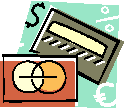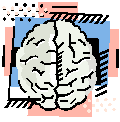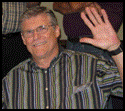Space scientist turns math teacher
By Murray Bourne, 15 Jan 2012

Dave Fashenpour
One of my readers, Dave Fashenpour, kindly agreed to do an interview to answer the question - why would a twice-retired space scientist become a math teacher?
The US is keen to recruit work-experienced people like Dave to teach math.
Dave used mathematics as a tool throughout his career in the military then in NASA, and continued to develop a love for the subject. This led to his recent career choice as a math teacher.
He writes that teaching math was the "hardest thing I have ever done in my life".
Dave wrote an interesting research paper about ways to teach mathematics in order to reduce "math fear" during his re-training college days. We talk about it in the interview.
Tell us about your previous careers in the Military & Aerospace industry


Dave: With a couple years of college studying liberal arts behind me, I joined the US Air Force and was sent to a 1 year technical school and learned how to repair secret code (crypto) computers utilizing binary and hexadecimal number systems and even some high level number sequencing methods.
Six years went by and I was a Staff Sergeant, working all day and taking math courses by night. I was finally selected to an education and commissioning program; sent to Colorado State University to get a BS in Math; and then off to OTS (Officer Training School) to receive a commission as a Second Lieutenant. During the remaining 14 years as an officer, I taught communications-electronics courses to new officers entering the Air Force and received a Master Instructor Award. I also was selected to return to school to get an MS in Computer Science from the University of Southern Mississippi.

International Space Station
Retiring as Captain with twenty years of service, a Top Secret security clearance, experience with modern communication-electronics systems, and an MS in Computer Science, I found a job rather easily with NASA in Houston as a Software Engineer for the Boeing Company. I was assigned to the International Space Station Program (ISS), involved in the design of the communication bus protocol that would “web” through the entire station. Mathematics came to the forefront again, in the creation of deterministic timing methods and data-bottleneck analysis schemes.
Math was also prominent in the design & verification of the Commands and Telemetry signals that would be communicated back and forth to the Space Station’s orbiting laboratories; all in four-digit hexadecimal groups, processed & translated into human readable displays.
I was fortunate enough to see all of these designs and plans become operational in the ISS and participated in the final missions to complete the last construction phase of the ISS. That took another twenty years and resulted in my retirement from Boeing.
How much math did you use in your work?
Dave: As stated above, mathematics played an integral role throughout my first two careers, as a result of computers, communications, and electronic systems.
It wasn’t until my second retirement, that math became a bigger deal.
I entered the University of Houston to take their graduate level series of courses in Mathematics Education, which was to lead to a certification as a Secondary Level Math Teacher. Math suddenly took the front-seat of my attention − mainly because my Math degree was from 1970. I made a couple attempts to pass the Math Teacher Certification examine and finally squeezed by with a passing score.
I got a job at an inner-city high school (Jones HS), and was assigned to teach 11th & 12th grade math. Jumping right into Algebra II, AP Algebra II, and Calculus for six hours a day (averaging 25+ students in each class) was the hardest thing I have ever done in my life and I didn’t even last to the Winter Break! I decided to take a vacation and to visit my terminally-ill sister in Florida and that was my most memorable vacation.


The next year I responded to an ad for a “Math Fellow” in a new program out of Boston, transplanted to Houston, Texas – called the Apollo-20 Program. I was assigned to teach/tutor mathematics to two (2) kids each class period, for six hours a day (totaling 12 students). I was hired and was sent to the sixth grade Math Lab at Dowling Middle school.
There were “GT” and special-education students, which we tried to group accordingly. This program is integrated into the regular curriculum and each of these students also has a traditional 6th grade math class, in addition to the hour that we spend tutoring them. Sometimes we prepare them for upcoming subjects and sometimes we re-visit problematic topics. The kids love their Apollo time!
I am half-way through my second year. The results of year #1 were fantastic – so there wasn’t even a question of not continuing the program (which is funded by local business leaders). It is a great job for a double-retiree, but the money is just slightly more than a burger-flipper. The photo shows two of my sixth grade students at Dowling Middle School, in Houston, Texas.
Here's more information:
Apollo 20 tutoring program seems to be making strides, which is a Houston Chronicle article about Dave's work.
What inspired you to become a math teacher, as your 3rd career?
Dave: The experience of teaching in the military gave me a “warm-fuzzy” feeling when I thought back on it; so going into teaching seemed like a no-brainer (turned out I would need my brain).
The single, most satisfying event for me is the “awww” or the famous “oooo” responses – seeing the eyes light-up and verbal acknowledgment that we just cut through the hard-stuff and arrived at understanding. One should hear at least one of those sounds on a daily basis to keep your “motor running”.
Tell us about your research paper
Dave: Here's the paper (PDF, 13 pages):
Taking Away the Fear of Solving Mathematical Problems

The paper addressed the emotions behind success in math. I have confirmed that there is an emotional hang-up with learning mathematics over and over. From the original research for the subject paper, to the classroom of Jones HS, to the 3-man desks of the Dowling MS Math Lab; many people have a predisposition to hate or not like certain aspects of math. Some just don’t like word, e.g. Algebra, Probability, etc.; others have had a bad taste from past experiences in math.
So, what does one do about it when you encounter an “I HATE THIS.” I have learned from on-the-job to start simple, repeat, critique & praise, and slightly increment the difficulty – and repeat.
Just today a 6th grade girl said I hate this kind of problem. I asked her if she hated falling off her bike when was learning to ride (she said yes). Then I asked if she still hated riding her bike, after she learned how to ride it (she said no). So then I explain that she will be learning how to solve this problem, just like she learned how to ride her bike. You won’t hate it then. She smiled.

I wrote the paper before I was a teacher. True I was inexperienced in what I was writing about and have since been able to experience the other side. Surprisingly, I did attempt to use many of the described teaching strategies. From the basketball court, showing how the talented basket-maker actually is computing the path, speed, and destination of the ball in his/her head. That connection caused some follow-on discussions and questions. The spatially adept learners love manipulatives and the non-verbal types enjoy computing silently in their head -- surprising everyone with the correct answer. Everyone is different and have a variety of needs and desires.
I really was not prepared to conduct differentiated instruction to my large HS classes of juniors and seniors – but I tried. I found myself walking the room and spending an inordinate amount of time with a special needs senior and having to skim by other needs (the special needs student still emails today, telling me that I was his most best teacher ever). When you just have to deal with two students at a time (eyeball to eyeball), as we do in the Apollo-20 Program, it is VERY easy to meet the students where they are and to serve up the exact portion they desire.

My view has changed. Teaching is hard – even just doing the minimal tasks required each day. Any extra icing on the cake takes extra effort – analyzing the optimum cognitive strategy for each student can only be done as time and situations permit.
In this my 3rd career, I work harder than I ever worked in the first 20 years or the 2nd 20 years of my previous careers and I think I may not make the full 20 years in this job!
Which activities (in the paper) have you tried out in a real classroom? How did they go?

Dave: The role curiosity plays in the affectivity of problem solving (Goldin, 2000). While the concept of internally generated interest is sound, finding out the student’s special interests and/or skills & abilities is not easy to do. It is time-consuming and requires an informal environment – then when you finally determine some specific interests (i.e. rap music, TV, opposite sex, soccer, etc.); it is hard to connect those to the curriculum topics. But one must be ready to react if the opportunity presents itself – like “I want to design a video game”, then to be ready with-- let’s talk about object oriented software programming and what someone would need to do, in order to be able to design, create, and program a video game.

The affect of interest and excitement in getting started solving mathematical problems (Ormrod, 2008). Reading popular magazines or checking the web for the best widget available, certainly captures their interest; but making these activities relevant and mathematically meaningful is tough. I have found that ‘shopping examples’ play well with money exchange topics, as well as percentage bargain dollars-off the original price, and for determining taxes. Recipe measurement conversions convey some interest to the future cooks and geometric measurements sometimes appeal to the wood-worker or car enthusiast. But beyond those low-hanging fruit, excitement seems hard to come-by.

The Credit Card project changed moans to laughter and enthusiasm (Marks, 2000). Teaching annual percentage rates and monthly finance charges, the credit card type exercise would be fantastic. Lesson plans do not get that sophisticated in 6th grade math and I am not sure I could fit a full-blown Credit Card project into my limited time. But the concept is a good one. Groups designing the art-work for their own Credit Card design are practicing creativity and graphic design. Groups deciding on a specific set of on-line purchases that meet their needs and at the same time keeping the credit card’s monthly payments as low as possible, is an exercise in maturity. Plus there certainly is a fun factor – which is always a good thing.

The set of cognitive abilities that makeup the theory of Multiple Intelligences (Gardner, 1983). This is a very important topic – understanding why people think differently and what can be done to facilitate those native abilities. I have used insights into different cognitive abilities successfully in three areas: the hands-on learner playing with fraction-sticks for example; the physical athlete pacing off feet on the basketball court; and the most common being a visual learner who can easily understand a picture or a graphic display. One other aspect of a unique cognitive ability was with a special needs student that was lost until class instruction was translated into procedures: step 1, step 2, and etc., all written down and performed repeatedly. Once mastered, there was no stopping him -- with the downside being he did not want to leave a subject that he had mastered.

The use of Multiple Representations, which illustrate four different approaches to teaching the same mathematical concept (Jones & Swan, 2006). This theme has already been covered in the above paragraph, because once you understand multiple intelligences, you understand that problems need to be presented and represented in a variety of different approaches, according to the individual needs of the student. This article simply identifies four different ways to solve the same problem, which is very useful – especially in a tutoring environment.

Multiple Strategies, which presents a single problem solved with five different techniques (Meyer, 1999). Multiple Strategies such as: draw a picture, use a model, make a list, eliminate possibilities, use symmetry, solve an equation, look for a pattern, work backward, and guess a & check; are a set of techniques or strategies that are used successfully to solve mathematical problems. These remain in our bag of tricks to be utilized when the individual need arise.
If you had the power to change one thing in math education – what would it be?
![C:\Users\Dave Fashenpour\AppData\Local\Microsoft\Windows\Temporary Internet Files\Content.IE5\V0S4L4D7\MC900056588[1].wmf](/blog/wp-content/images/2012/01/clip_image032.gif)
Dave: The kids that come to the US from other countries almost all know their basics: addition, subtraction, multiplication, and division. That is extremely useful and easy to build upon. The struggling kids that were educated here just do not have a firm confidence in the basics. Case in point, at a HS in Houston, a senior girl was called to the board to work a problem and she could not solve a simple multiplication problem without a calculator. She was graduated.
If only memorization of the Multiplication Tables from 1 through 12 was mandatory and required for entering Grade 6, a new level of sophistication could be realized. It would not surprise me if we could cover double the material than we currently have to wade through; without stopping to count on their fingers, or draw hash marks on the paper, or write all of the multiples of a number down, before deciding how many are required.
In the meantime, we are here to “give a year” and to “change a life”.
 David R. Fashenpour
David R. Fashenpour
Houston, Texas
10 Jan 2012
Questions to: [email protected]
Thank you Dave, and all the best with your third career!
Be the first to comment below.
